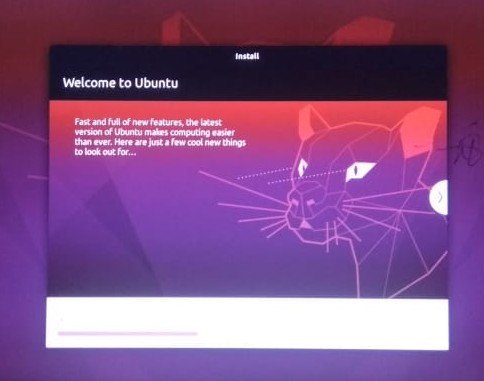

#How to install ubuntu from usb cats how to
Please refer to the Downloads section for further instructions on how to do so. The data exchange follows the PicoBoard protocol and needs a specific program (firmware) to be installed in the board. S4A interacts with Arduino by sending the actuator states and receiving sensor states every 75 ms, therefore the pulse width needs to be greater than this time period. Using a PicoBoard along with an Arduino board is also supported. Take in account that this compatibility doesn't work both ways, so you won't be able to open an S4A project from within the original Scratch. However, you won't be able to share your projects on the Scratch community website because doing so goes against the Scratch terms of use. S4A is backwards compatible with Scratch, so you can open Scratch projects in it. S4A allows you to control as many boards as USB ports you have. You can manage a board wirelessly by attaching an RF module to it, such as Xbee. S4A allows for 6 analog inputs (analog pins), 2 digital inputs (digital pins 2 and 3), 3 analog outputs (digital pins 5, 6 and 9), 3 digital outputs (pins 10, 11 and 13) and 4 special outputs to connect Parallax continuous rotation servomotors (digital pins 4, 7, 8 and 12). ConnectivityĬomponents have to be connected in a particular way. Other boards haven't been tested, but they may also work.

S4A works with Arduino Diecimila, Duemilanove and Uno. It is possible to connect to multiple boards at the same time by just adding a new Arduino sprite. The Arduino sprite will automatically find the usb port where the board is connected. In S4A, an Arduino board is represented by a special kind of sprite. You can find blocks to manage standard and continuous rotation servomotors: The interfaceĪn S4A program to control a light-sensor Theremin, with record and playback capabilitiesĪrduino objects offer blocks for the basic microcontroller functionalities, analog and digital writes and reads, and also for higher level ones. The goal is also to provide a high level interface to Arduino programmers with functionalities such as interacting with a set of boards through user events. The main aim of the project is attracting people to the programming world. There is also a sensors report board similar to the PicoBoard one. It provides new blocks for managing sensors and actuators connected to Arduino. It should look like "APPEND -c boot.S4A is a Scratch modification that allows for simple programming of the Arduino open source hardware platform. Sudo nano /usb/syslinux.cfg -> append -p 1 to line "APPEND -c boot.cfg" Sudo mv /usb/isolinux.cfg /usb/syslinux.cfg Mount -o loop /home/user/Downloads/VMware-VMvisor-Installer-6.7.0.update03-****.iso /esxi Sudo umount /dev/sda1 use mkfs.vfat to format the partition sudo /sbin/mkfs.vfat -F 32 -n ESXUSB /dev/sda1 copy syslinux / install syslinux to /dev/sda1 syslinux /dev/sda1 copy mbr.bin to /dev/sda cat /usr/lib/syslinux/mbr/mbr.bin > /dev/sda copy all the esxi content to your usb stick sudo mkdir /usb Unmount partition and device sudo umount /dev/sda Sudo fdisk -l unmount the usb device sudo umount /dev/sda create partition table using fdisk (be sure to use the correct device!!!) sudo fdisk /dev/sdaĢ - Create new primary partition by pressing and -> Press Enter three timesģ - press and to set the file system to FAT32

Install syslinux sudo apt install syslinux Identify your usb stick using one of the following commands (it should be somethin like /dev/sda, /dev/sdb, /dev/sdc…) df -h


 0 kommentar(er)
0 kommentar(er)
